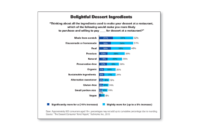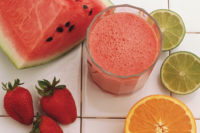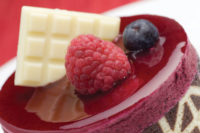Authentic Indian Dairy Desserts


However, traditional Indian dairy products remain generally unfamiliar to North American-based food processing companies. Such products offer an intriguing marketplace opportunity, as consumers could be provided intriguing and exotic new products reminiscent of more familiar dairy foods.
-- Prepared Foods Editors
Mark Twain, after his visit to the Orient, declared: “Although there are 365 days in a year, India has 366 festivals.” He put his finger on the pulse of real India with this cheeky comment. Truly, India is a land of fairs, feasts and festivals. In this rich diversity, sweets occupy a place of pride. Indian culture is rooted in the concept of good food, good life and good cheer. This holistic approach is reflected in the incredible variety of delicacies that deftly combine delectable taste with assured nutrition for body, mind and even the soul. These ethnic dairy foods have been covered in depth in the first publication of its kind, a 462-page handbook, Technology of Indian Milk Products. (See information at this article's end.)
Modern product developers can turn to ethnic foods for ideas to expand the present range of desserts, dips and fudges. They can explore the scope for integrating ethnic and modern process techniques and formulations to “create” a new class of dairy novelties that would have an exotic appeal.
Through millennia, Indian sweet delights have gone through waves of innovations, both in product formulations and processing by unsung master-confectioners. Traditional methods of ethnic sweet-making now are being integrated with modern culinary technology. In the last two decades, scientists at R&D centers in India have used quark separators and scraped-surface heat exchangers to pasteurize and process shrikhand, a fermented dairy dessert. Meatball-portioning machines and industrial fryers make gulabjamuns, fried balls of milk powder mixed with wheat flour. Japanese pastry-making machines and planetary mixers make other ethnic delicacies.
India's first plant to make traditional dairy foods went into production in 1981 in Vadodara, Gujarat, in Western India. Since then, a large number of dairy plants have taken to the production of Indian delicacies and specialties. A pilot plant to make them outside India has been in production at Miramichi, NB, in Eastern Canada since 2002. The unit is attached to the Northumberland Dairy Cooperative. Such a project has also aroused interest in Australia.
Indian sweets are characterized by the absence of stabilizers, emulsifiers, chemical preservatives and the like. Even the acidulant used for coagulating milk for paneer and chhana-making is usually the whey recovered from the earlier batch. Presently, the annual production of traditional sweets in India is estimated at three million tons, valued at US$10 billion. They are classified into the following five categories: desiccated milk-based products, heat/acid coagulated products, cultured/fermented products, fat-rich products and cereal-based puddings/desserts. Below are brief descriptions of some of the popular ethnic sweets, arranged in alphabetic order:
P.R. Gupta is the editor and publisher of the “Dairy India Yearbook.” For more information on the Indian dairy industry, contact him at yearbook@ vsnl.com or see www.indiadairy.com. Technology of Indian Milk Products. R.P. Aneja, B.N. Mathur, R.C. Chandan and A.K. Banerjee. Pages: 462 +; 248 tables and 76 charts, illustrations and drawings; 33 color photographs. ISBN: 81-901603-0-3; US LCC No: 2003-307836. Price: U.S.$150 plus courier & handling U.S.$45. Publisher: P.R. Gupta, Dairy India Yearbook, A-25 Priyadarshini Vihar, New Delhi 110092, India; Ph: (+91-11) 22543326, 22045681; www.IndianMilkProducts.com.
Links
Looking for a reprint of this article?
From high-res PDFs to custom plaques, order your copy today!





